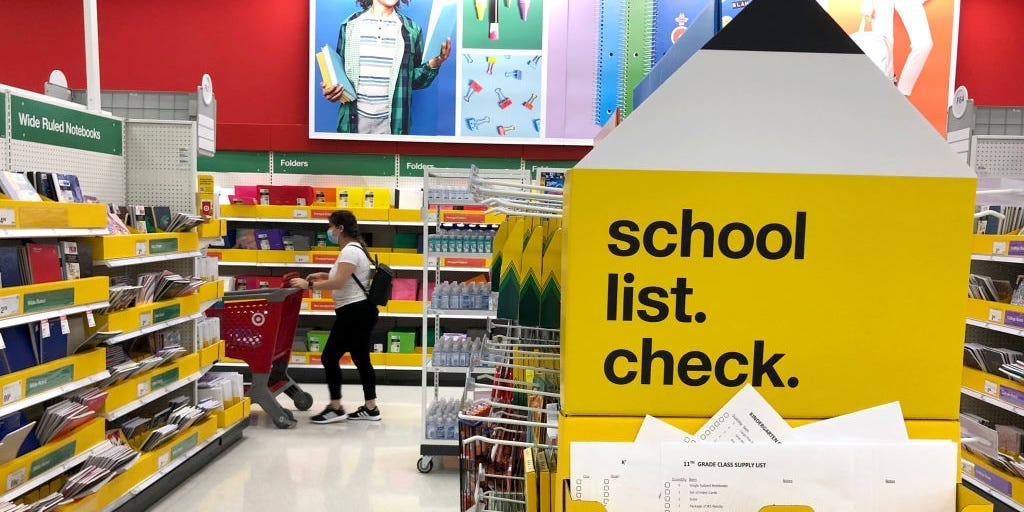
- Despite the Biden administration saying the inflation surge would only be temporary, price growth still hasn't cooled.
- The stubbornly high inflation has led some to fear a new era of permanently surging prices.
- Still, three trends are poised to drag inflation to healthier levels and end the pandemic-era price rally.
You've probably noticed that prices are still soaring higher. You're not alone. Inflation remains high throughout the economy, from gasoline to grocery costs. No matter where you spend, inflation is there.
It's not the situation the Biden administration and the Federal Reserve were counting on. Both have long said the pandemic's red-hot inflation would be "transitory," and that it would cool down as the economy healed.
That hasn't happened. Inflation stayed put at decade-highs in September, worsening fears that the price surge could turn permanent.
Government officials have raised alarms. Elevated price growth will linger into 2022, Treasury Secretary Janet Yellen said Sunday, adding inflation probably won't cool until "the middle to end of next year." And outside the Biden administration, CEOs including Elon Musk and Jack Dorsey have warned that inflation will stay high longer than expected.
But for all the fears of spiraling inflation, we're probably not facing a crisis. Here are the three reasons why US price growth will still cool off in the next 12 months.
The US population isn't growing as fast
The country is undergoing a seismic shift in its demographics. On one end of the age spectrum, Baby Boomers are rushing into retirement. Americans are more likely than ever to retire before they turn 62. And the entire boomer generation is set to be at least 65-years-old by 2030, according to the Census Bureau. As the massive group ages further, their collective spending will soften and boomers will place less upward pressure on inflation.
Younger Americans aren't filling the gap. Population growth slowed to the lowest rate since the Great Depression in 2020, the Census Bureau said in April. Much of the slowdown was powered by weaker family formation among young adults. Millennials have been slammed by two unprecedented recessions in the span of 15 years, leaving many with scarred finances. And growth is unlikely to rebound. The Brookings Institute forecasted in June that fertility rates will likely lag replacement rates for the foreseeable future, Insider's Hillary Hoffower reported.
A sustained surge in inflation would require consistently strong demand. With population growth expected to slow further, Americans' spending is more likely to stall than soar.
Rich Americans are hoarding cash
Even if the population grew faster, spending probably wouldn't change much. Research shows low-income Americans have the highest marginal propensity to consume, meaning they spend more when they get a raise or a bonus. Conversely, the wealthiest Americans spend less of their bonuses and save much of the cash instead.
That gap stands to keep inflation anchored. The richest 5% of Americans held more than two-thirds of the country's total wealth at the end of 2016, according to a paper published by the National Bureau of Economic Research. Meanwhile, analysis from Pew Research shows middle-income and low-income Americans holding smaller and smaller shares of US wealth through 2016.
Should the trend continue, more of the country's wealth will be saved by the richest Americans. That stands to dampen spending by the rest of the population and keep prices from soaring higher.
The global supply-chain crisis is on the decline
Much of the higher inflation seen today comes from a worldwide shipping mess. A global energy crunch, factory blackouts, shipping delays, and port bottlenecks have strangled supply chains. At the same time, Americans' spending has kept climbing as the country reopens.
Demand is booming, but companies are struggling to shore up supply. That's fueled price hikes throughout the economy.
Yet experts already think the worst is over. There are signs the US is "past the peak pinch," and the supply-chain tangle will see "significant improvement" by the second half of 2022, Jefferies economists led by Aneta Markowska said earlier in October.
The White House called on companies including FedEx, Walmart, and UPS earlier in October to work 24/7 to ship orders and work through massive backlogs. Separately, the Port of Los Angeles announced on October 13 it would work around the clock to process container ships. More recently the ports of Los Angeles and Long Beach said they would start fining shipping companies $100 each day for every container left on the docks.
The cleanup, then, is underway. As shipping lines heal, supply is expected to bounce back and better match demand. The shortages that have powered inflation higher throughout 2021 are quickly fading away.
